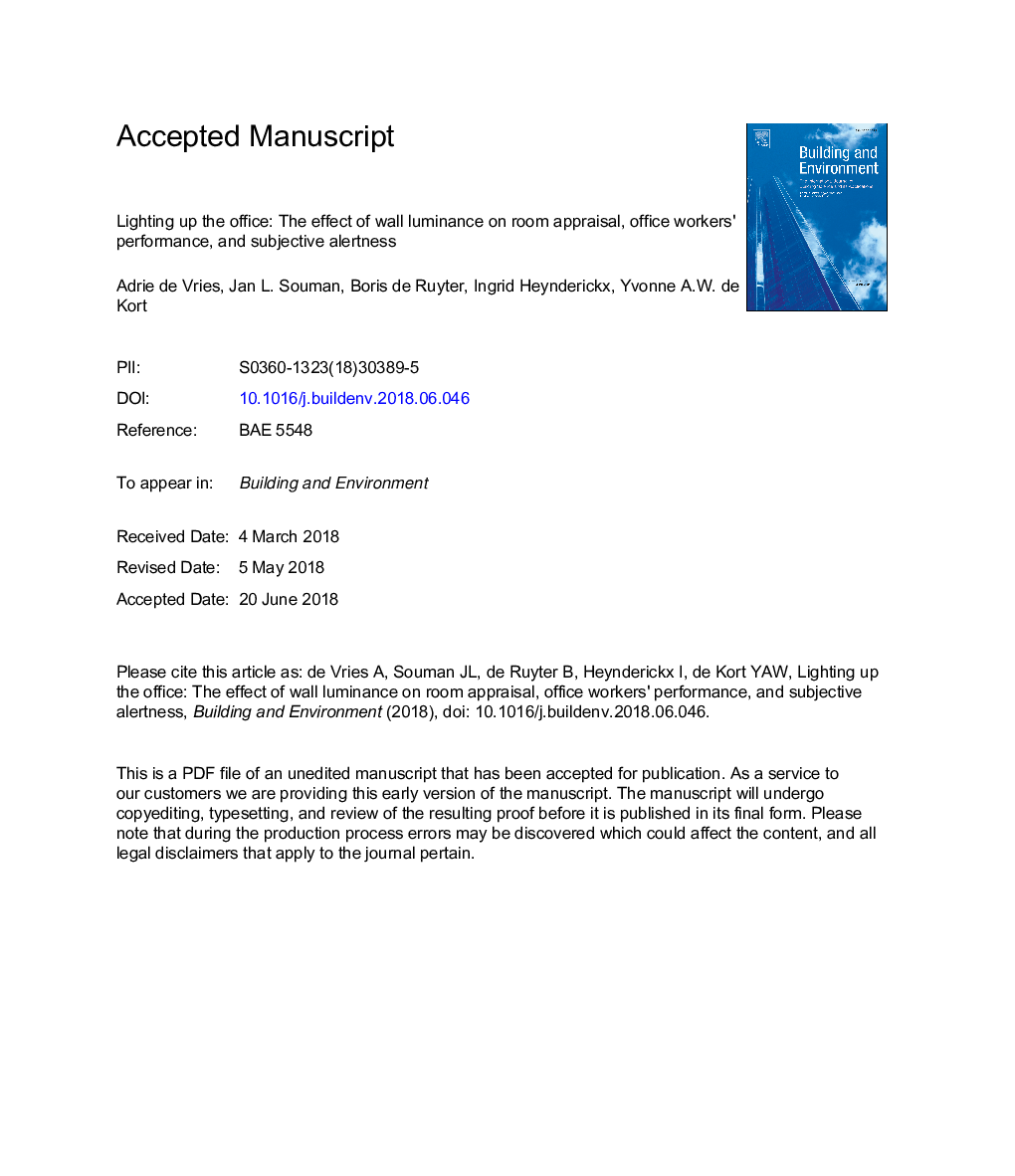| Article ID | Journal | Published Year | Pages | File Type |
|---|---|---|---|---|
| 6696908 | Building and Environment | 2018 | 34 Pages |
Abstract
Creating the right environment is considered essential in today's office designs to foster collaboration, concentration and creativity. Much, however, is still unknown with regard to how lighting affects the office knowledge worker. In this study, we have explored the effects of a single, carefully isolated lighting design parameter, namely wall luminance, on the appraisal of an office space, the affective state of the occupants, their subjective alertness and their performance on a key knowledge worker task: problem solving. Room appraisal increased significantly with higher wall luminance, both on attractiveness and illumination. No effects were found on the pleasure, arousal or dominance dimensions of emotion ratings by the participants, nor were effects found on the performance of divergent and convergent problem-solving tasks. Unexpectedly, wall luminance did affect the subjective alertness of the participants, as participants were able to maintain their level of subjective alertness in the highest wall luminance condition, whereas subjective alertness decreased significantly over time in the lowest and medium wall luminance conditions. As this effect is commonly found in studies where light exposure on the human eye is manipulated (and often attributed to non-visual effects) the finding from this study provides a first indication that next to the amount of light on the eye, wall luminance and room appearance might also play a role.
Related Topics
Physical Sciences and Engineering
Energy
Renewable Energy, Sustainability and the Environment
Authors
Adrie de Vries, Jan L. Souman, Boris de Ruyter, Ingrid Heynderickx, Yvonne A.W. de Kort,
